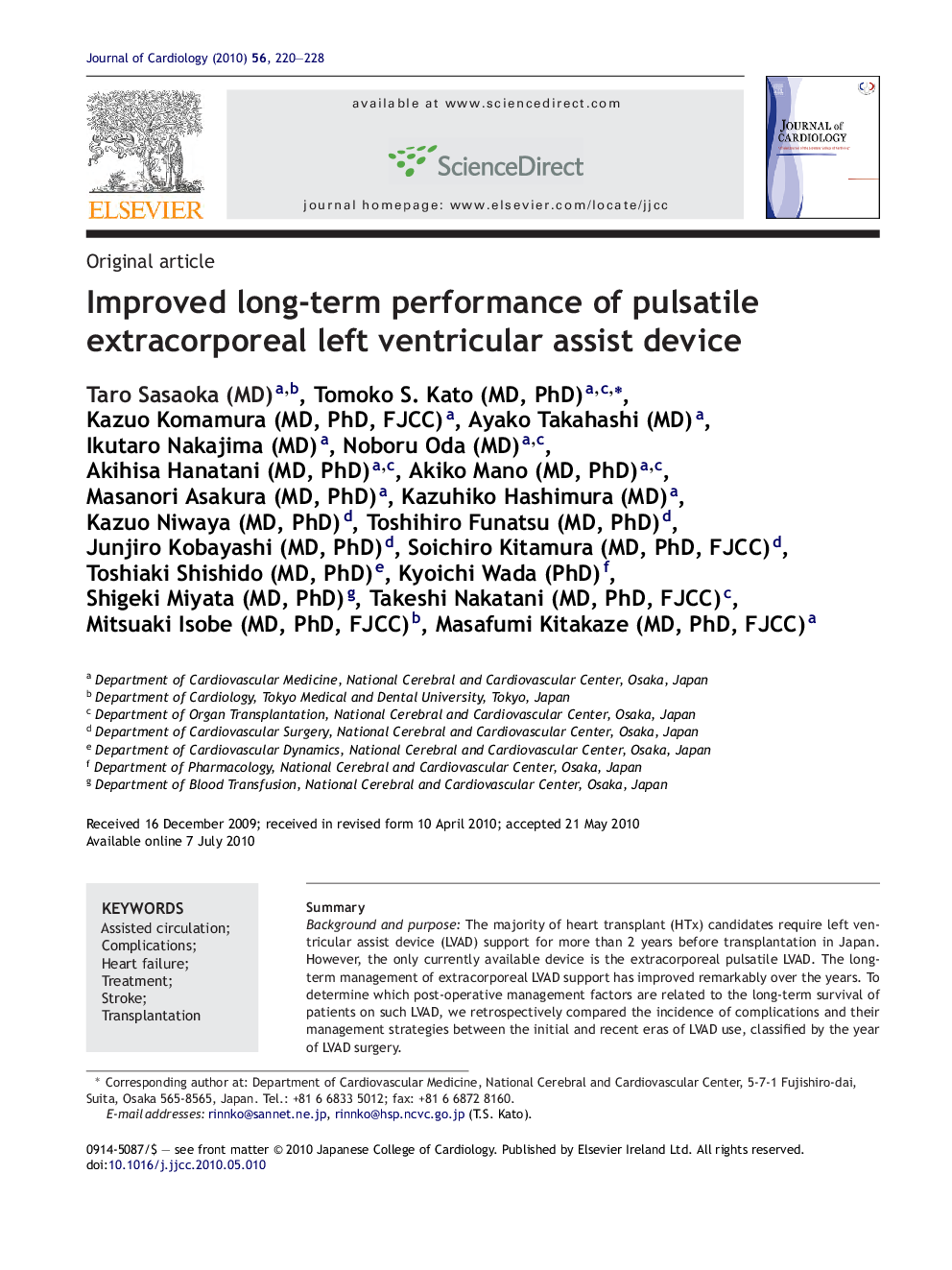| Article ID | Journal | Published Year | Pages | File Type |
|---|---|---|---|---|
| 2963438 | Journal of Cardiology | 2010 | 9 Pages |
SummaryBackground and purposeThe majority of heart transplant (HTx) candidates require left ventricular assist device (LVAD) support for more than 2 years before transplantation in Japan. However, the only currently available device is the extracorporeal pulsatile LVAD. The long-term management of extracorporeal LVAD support has improved remarkably over the years. To determine which post-operative management factors are related to the long-term survival of patients on such LVAD, we retrospectively compared the incidence of complications and their management strategies between the initial and recent eras of LVAD use, classified by the year of LVAD surgery.MethodsSixty-nine consecutive patients supported by extracorporeal pulsatile LVAD as a bridge to HTx between 1994 and 2007 were reviewed retrospectively. The patients were assigned according to the time of LVAD surgery to either group A (n = 30; between 1994 and 2000) or group B (n = 39; between 2001 and 2007).ResultsPatients in group B survived significantly longer on LVAD support than those in group A (674.6 vs. 369.3 days; p < 0.001). The 1- and 2-year survival rates were significantly higher in group B than that in group A (82% vs. 48%, p < 0.0001; 68% vs. 23%, p < 0.0001, respectively). The proportion of deaths due to cerebrovascular accidents was lower (17% vs. 50%, p < 0.001) in group B compared with group A. The incidences of systemic infection were similar in both groups, but the proportions of patients alive and achieving transplant surgery after systemic infection were higher in group B than those in group A (55% vs. 14%, p < 0.01; 14% vs. 36%, p < 0.05, respectively).ConclusionsThe long-term survival of patients even on “first-generation” extracorporeal LVAD has improved significantly in the recent era. Careful management of cerebrovascular accidents and systemic infection will play important roles in the long-term LVAD management.
